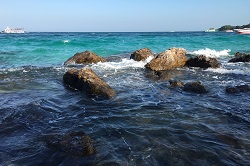New sensors to track the health of our oceans
Oceans and seas play a vital role in determining our climate and weather, providing us with an important source of food, supporting the livelihoods of billions of people and ensuring that the economies of many countries stay afloat. However, sea- and land-based human activities are increasingly impacting the health of our marine ecosystems. The SCHEMA project has developed new technology to identify substances that are harming the equilibrium of marine ecosystems, potentially impacting human health, the fishing industry, coastal tourism and the long-term sustainability of our seas and oceans. “A number of marine ecosystems are underperforming due to the severe environmental stress from human activities but monitoring this is problematic. The commercial availability of deployable sensors and sensing devices is still limited – most of these tools are too large, expensive and power-hungry, hindering their widespread use,” says Mary-Lou Tercier-Waeber, SCHEMA project coordinator. Easily-deployable mini sensors To help overcome measuring difficulties and improve ocean monitoring, SCHEMA partners have developed miniature sensors that can map a range of anthropogenic and natural chemical and biological compounds at a very high resolution. They can detect trace metals; species that play a role in the carbon cycle like carbonate, calcium and the hydrogen ion; nutrients like nitrogen and nitrate; volatile organic compounds; potential harmful algae and biotoxins – all of which may adversely affect the oceans’ health. Nutrients can cause the development of harmful algal blooms and an increase in oxygen-stifled zones in the oceans. Metal and organic compounds, due to their toxicity, persistence, and tendency to accumulate along the food chain, may have a long-term impact on marine biomass composition, activity and health. The sensors can also help track ocean acidification levels – a process caused by oceans absorbing carbon dioxide from the atmosphere. Ocean acidification is predicted to disrupt food chains and undermine the functioning of marine ecosystems. The sensors will also help to monitor the ability of oceans to carry on absorbing carbon dioxide – a key factor in the fight against climate change. The project used cutting-edge electrochemical, optical and fluidic techniques to develop powerful, low-power consumption sensing probes that incorporate the miniature sensors and mini-fluidic systems. It then developed a network controller based on Open Geospatial Consortium - Sensor Web Enablement interfaces and a Global System for Mobile Communication (GSM) transceiver. “Our integrated modular multifunctional sensing system enables autonomous, high resolution, simultaneous, in situ measurements of a broad range of relevant bio-geochemical parameters,” says Tercier-Waeber. SCHEMA’s new technology was tested in areas of the Atlantic and in Mediterranean coastal zones. Tests were successful in tracking sources of hazardous chemical and biological compounds, and in acting as a system to raise the alarm about these substances. For example, in the bay of Arcachon, South-West France, SCHEMA detected zinc and copper from an industrial origin in their most toxic form. It also found nutrient input from freshwater effluents and a phytoplankton that produces a neurotoxin. This data will help researchers to advance monitoring strategies, boost the ability to predict the impact of toxins on the local ecosystem and help develop ways to sustainably manage the bay’s ecosystem. SCHEMA partners are now working on bringing their field-validated prototypes to the market, as well as improving the ability of the probes to detect other detrimental chemical compounds, for example volatile organic compounds and saxitoxin – a neurotoxin produced naturally by some species of algae.
Keywords
SCHEMA, seas, oceans, Open Geospatial Consortium, ecosystems, toxins, algae, sustainable management







